WebAuthn Device Identity
Device identity links a cryptographically unique ID to each device, letting you enforce zero-trust principles by verifying who a user is logging in as and which device they're using. Pomerium uses WebAuthn to enable clientless zero trust device identity, so you can authenticate devices without requiring an agent or proprietary driver.
- Clientless: No additional agent or client software needed.
- Hardware & TPM-backed: Ideal for strong hardware security modules like TPM, Secure Enclave, or YubiKey.
- Open Standards: Uses the W3C WebAuthn spec, bridging broad browser support with modern authentication.
- Privacy-protecting: Because WebAuthn is designed for user authentication, direct “device identity” is partially obfuscated, which can be both a feature (protecting user privacy) and a limitation (less direct correlation to a single OS/hardware setup).
Device Identity with Pomerium
As of Pomerium v0.16.0 and higher, you can require WebAuthn for device identity checks. This means:
- Users can register their devices as a trusted execution environment.
- Admins can configure policy restricting route access to only devices that have been authenticated through WebAuthn.
- In Enterprise, enrollment can be self-service or admin-driven, with optional device approvals.
Note: Because WebAuthn is designed primarily for user/browser authentication, it has robust privacy protections. This can limit direct OS-level or hardware-level “fingerprinting.” While beneficial for end-user privacy, it means purely WebAuthn-based flows may not always match a 1:1 device identity. Organizations needing deeper OS-level posture checks might consider separate or complementary solutions.
Comparing Device Enrollment Methods
Agent-based solutions typically rely on proprietary software installed on each endpoint, providing full OS posture checks but increasing maintenance overhead.
Mobile device management (MDM) offers wide insight and control but can be intrusive and complex.
WebAuthn stands out for:
- Clientless Zero Trust: No agent required; the browser implements WebAuthn.
- Hardware & TPM: Leverages built-in security keys (e.g., Windows Hello, YubiKey, Touch ID, TPM) for cryptographic assurance.
- Open & Standardized: Works across major browsers and platforms.
- Privacy-Focused: The user's real device hardware details are masked behind ephemeral keys, limiting tracking but also reducing direct device fingerprinting.
As a result, WebAuthn-based device identity can be a sweet spot for many zero-trust deployments: strong security, minimal friction, wide compatibility. But it is more “browser identity” than a fully OS-level solution.
Device Identity Features
Pomerium Core and Enterprise support WebAuthn-based device identity. However, Enterprise provides additional management features:
| Features (Enterprise) | WebAuthn Device Identity |
|---|---|
| Pre-approved device enrollment | Admins can enroll a new device, generating a user-specific registration link. |
| Device management | View, approve, or delete devices in the Enterprise Console. |
| User-initiated device enrollment | Users can register their device if a route requires device identity. The device remains pending until approved. |
| Features (Core) | Device Identity |
|---|---|
| User-initiated device enrollment | Users can register and immediately access routes that require device identity (no approval flow). |
New Enrollment (Enterprise)
Pomerium implements a trust on first use (TOFU) approach for device identity:
- Admins generate a registration link for a specific user.
- When a user registers a device via the link, that device is automatically approved (TOFU).
Manage Devices (Enterprise)
Administrators can track device status in the Enterprise Console. New devices begin as Pending Enrollment and become Approved upon successful registration.
If a device is Deleted, it's effectively revoked. Any associated link becomes invalid.
Enroll Devices as an Administrator (Enterprise)
In Enterprise, you can enforce policies that only allow routes to approved devices. (See Device Matcher.)
The Manage Devices GUI lets you create enrollment links for directory-synced users.
Ensure directory sync is configured to populate user data. :::
Steps:
-
In the Console sidebar, select Devices.
-
Click NEW ENROLLMENT:
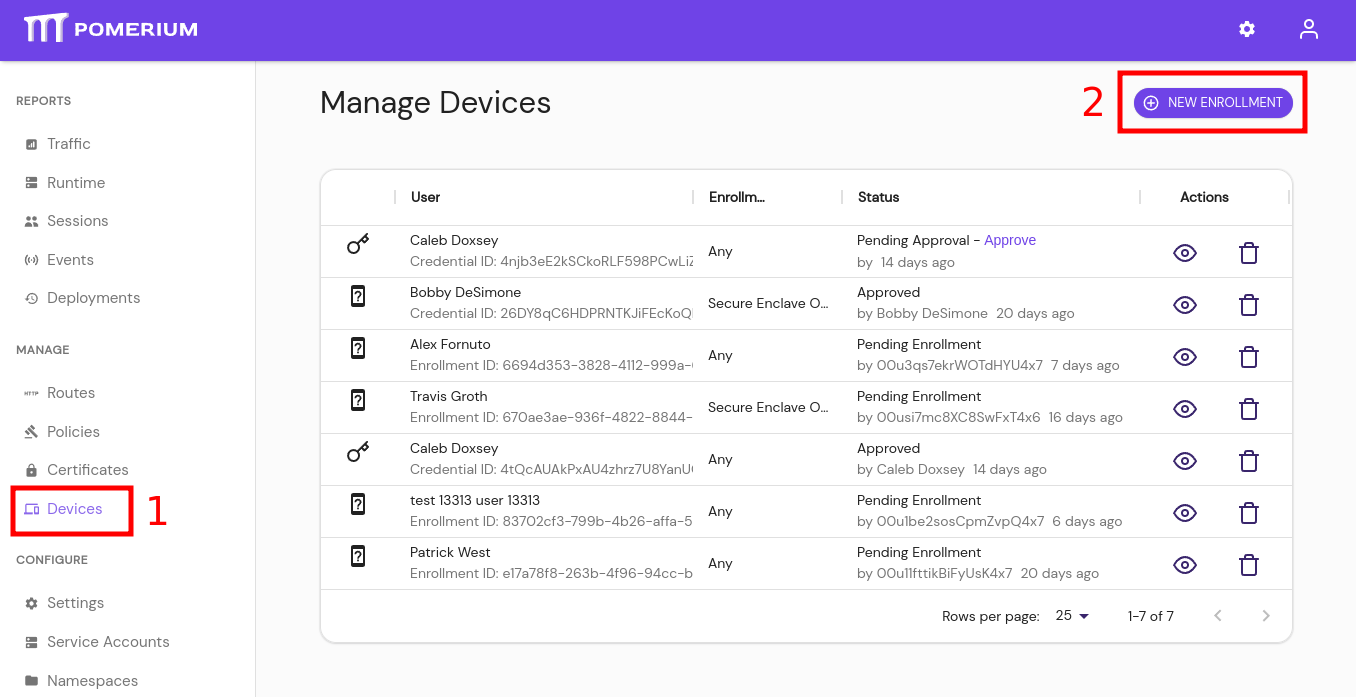
-
Fill out New Enrollment:
- Select Users: A user from your directory (the link is only valid for them).
- Route: Choose a Pomerium route; your custom link will point here.
- Redirect URL: (Optional) A route to send users after enrollment.
- Enrollment Type:
- Any: Any WebAuthn-compatible device (hardware keys, OS biometrics).
- Secure Enclave Only: Limit registration to platform-based secure enclaves (e.g. iOS Secure Enclave, Windows Hello TPM).
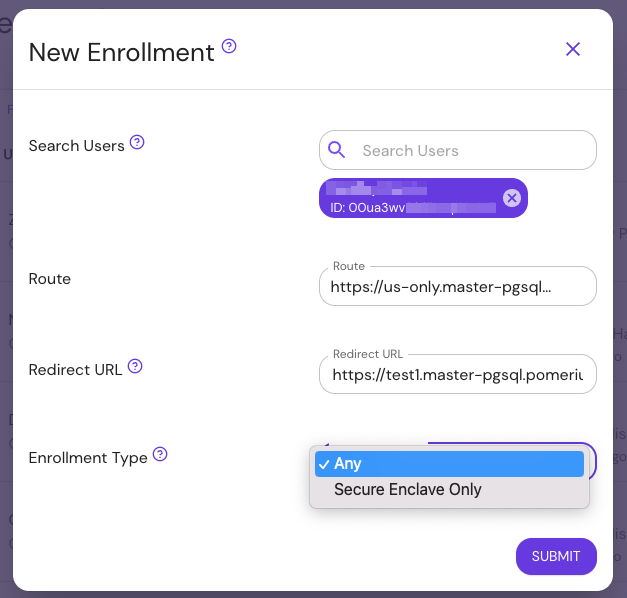
-
Select SUBMIT to generate the enrollment link, then share it with the user:
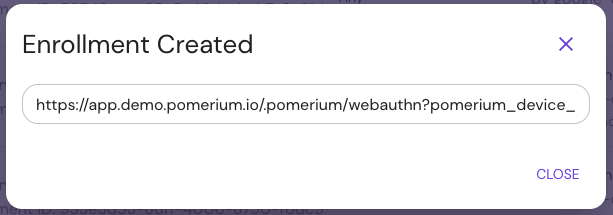
Enroll Device as a User
If a Pomerium route requires device identity, users will be prompted to register a device. This flow is similar in Core and Enterprise (though Enterprise can also allow admin pre-approval).
-
When visiting a route requiring device identity, users see a device registration screen:
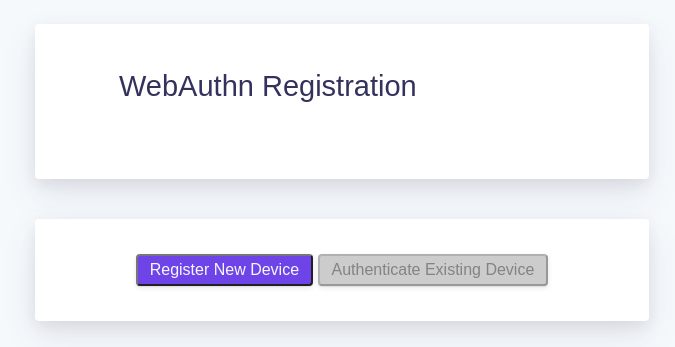
-
Users can also open the
.pomeriumendpoint for any route to access Device Credentials: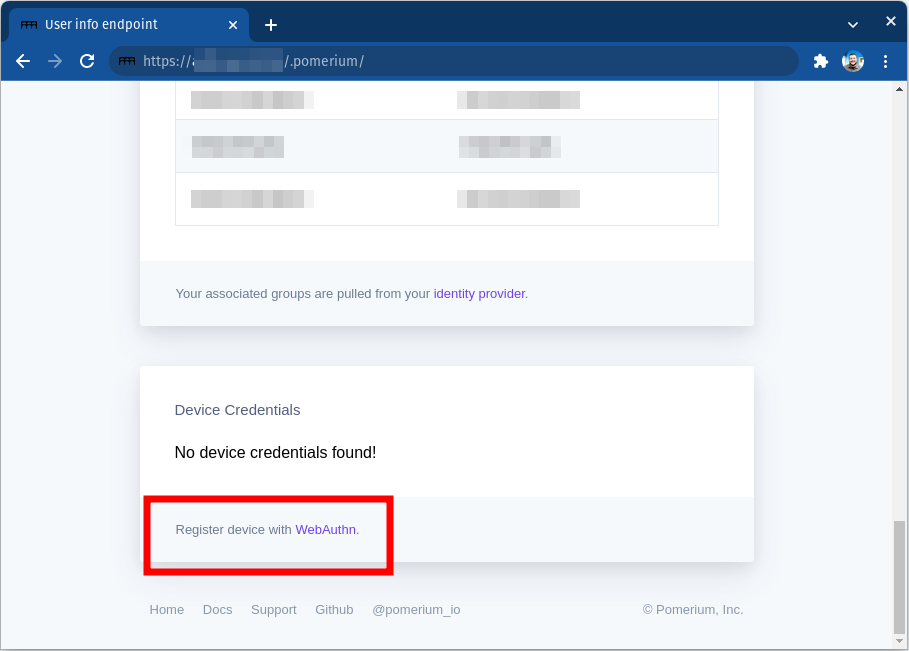
-
Select Register New Device. The browser prompts for hardware or biometric verification. The prompts vary by OS or browser:
- Windows
- Chrome
- Firefox
- ChromeOS




Find the Device ID
If a route policy specifically requires a certain device ID, you might see a 450 device not authorized error even after registering:
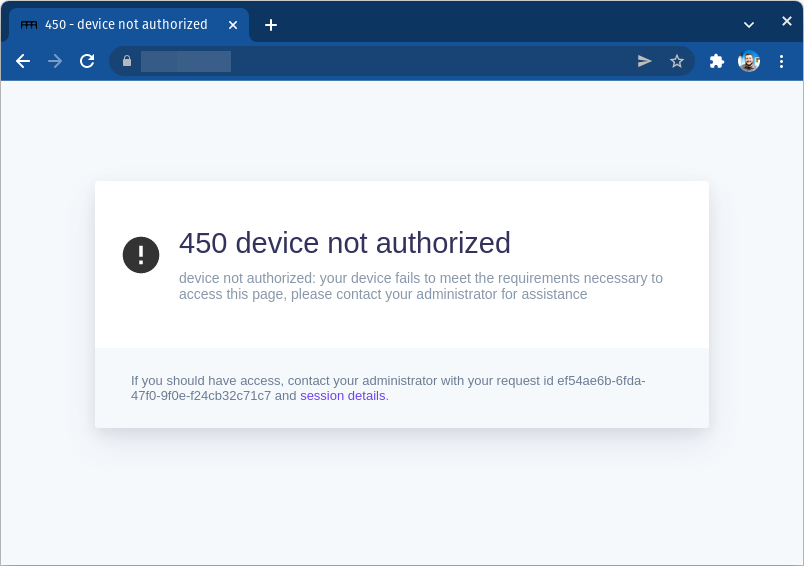
From the .pomerium endpoint, you can copy your device ID and share it with your admin:
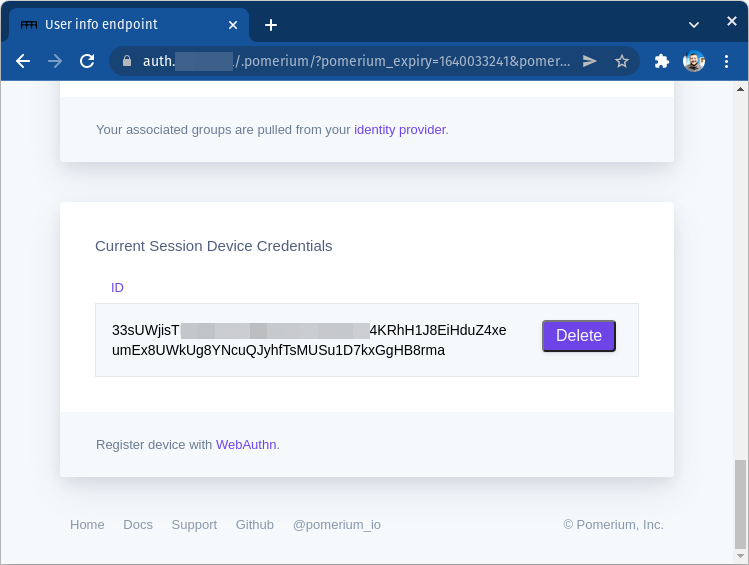
You can also remove any device you no longer want associated with your account.
Summary
WebAuthn enables clientless zero trust device identity in Pomerium:
- No agent: Achieve strong hardware-backed verification with standard browsers.
- TPM/Enclave: Tied to user gestures (PIN, biometric) or physical tokens (YubiKey).
- Privacy-Focused: WebAuthn conceals hardware details, limiting direct OS posture checks.
- Enterprise: Gain streamlined enrollment, approval, and device management in the Console.
- Core: Basic user-driven enrollment.
With WebAuthn, you balance user privacy and security convenience while raising the trust level of your routes—an excellent fit for zero-trust approaches.